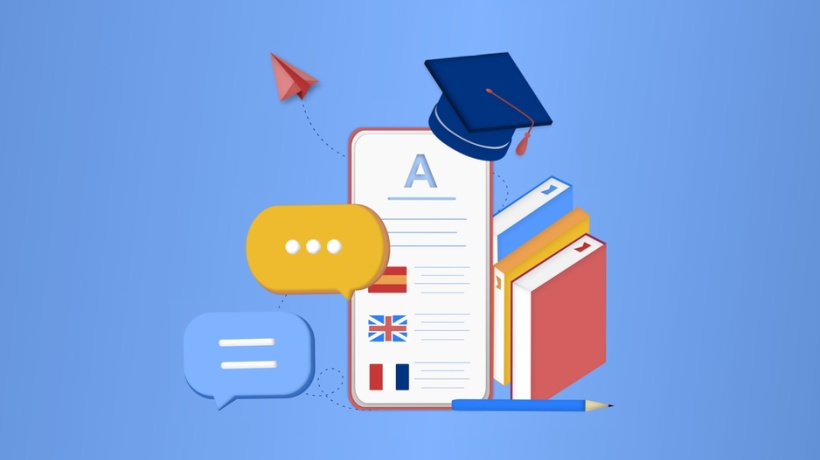How To Achieve Accurate eLearning Translations
Many organizations are recognizing the need to translate eLearning courses for diverse learning communities. The question is… how do you make sure you have accurate eLearning translations? Over the years, some common mistakes have been noticed during the translation process. The good news is that they can be easily avoided if you choose to follow the following steps:
1. Prepare Content
Before you even consider translating your content, you need to understand your global strategy. Make sure you consider your target audience, foreign market, messaging, and branding. Even something as simple as color schemes can greatly impact how your eLearning content is received. That being said, you’ll need to create some basic guidelines for your eLearning content creators to adhere to.
A few examples of some of these guidelines could include:
- Avoid too many idioms, colloquialisms, and cultural analogies.
Some of the sayings in the United States might not make any sense of another culture or language. For instance, the idiom "to hit the sack" means to want to go to bed, but people from other countries may take this literally and become confused by your content. - Be clear, concise, and simple.
Keep in mind that your eLearning course content will need to be translated into much more complicated languages at times. The more basic and simple you keep the content, the easier it will be to translate. - Avoid too much redundancy in your messaging.
Often times, linguists will only have a limited number of synonyms they can utilize, which can make your content seem sloppy. - Pay attention to your visual content.
Be conscious of your color scheme, and make sure you leave extra white space for potential language expansion. And especially avoid embedding text in graphics, since those will be impossible to translate.
2. Analyze Project
Make sure to gather all of your eLearning materials, including project related files and content. Many professionals choose to use Storyline or Captivate as a Content Management System, simply so that either platform can ‘house’ the script with every slide and screen.
Do you have any video or audio in your eLearning project? Make sure if it’s an embedded video, that you submit the original video or audio files. Are you building your eLearning content within a custom platform? In that particular situation, it is recommended that you access an LMS for the context of your material. Again, this will simply ensure the most accurate eLearning translation.
3. Develop Glossary And Style Guide
Why do you need a glossary for your eLearning courses? Because a glossary will provide a list of terms that the linguist must follow for the sake of consistency. This also comes in handy when you need to translate industry jargon, terms requiring clarification, and terms that are not supposed to be translated. Consistent eLearning translations will help you build trust and credibility in your brand.
The style guide is just as important as the glossary. Your style guide should explain linguistic information, tone, and style that should exist throughout all translated materials. For instance, various content verticals like marketing, legal, or software will all have different linguistic needs.
4. Review Expectations With Client/Subject Matter Expert (SME)
It is common knowledge that translation is a human endeavor, and therefore, different opinions may arise, regardless of how qualified the linguists may be. This is a critical step in the eLearning translation process to make sure all project collaborators are on the same page.
The linguist is an expert in the art of language formulation with a specialized knowledge in various content Subject Matters from their experience, interests, education, or work life. They must work in harmony with the Client Reviewer or SME, the person responsible for ensuring quality and accuracy of the translations.
The linguist and the client SME work together to understand each other’s disposition toward translation. In order for this to work effectively, the SME may be required to provide additional expectations, preferences, dos and don’ts.
5. Provide Necessary Training
This is a simple step, but it could end up saving you a lot of time otherwise spent reviewing translation accuracy. Providing linguist training in your product functionality will give the translator contextual references and improved understanding. This is especially valuable for software localization and website content.
6. Sample The Translation
Are you nervous about your eLearning translation accuracy? It is understandable. That’s why you should select a limited amount of content to translate and test the accuracy and consistency.
The translation sample will give all project collaborators an idea of how the process works and establishes expectations for all future translation projects. It’s critical that all the previous steps have been completed before the sample is sent over if you want the best idea of how the translation process will flow.
7. Translate The eLearning Content
You should use native, professional linguists to translate your eLearning courses into the target languages you select. Using a proprietary translation management platform enables linguists to see all the proper reference materials, glossary, and style guide in a centralized system.
Do you see the problem? Most organizations start here… on step 7. The 6 steps before translation ensure better consistency and accuracy with each translation project.
8. Client/Subject Matter Expert Reviews Translation
This is where translation quality goes to the next level. The SME is invited to review the translation and make comments within the platform. The suggestions they provide go directly to the linguist working on the project. At this point, the SME and linguist can have a dialogue about changes, and then, they should implement the best solution.
The feedback is recorded and results in an overall quality score for the linguist. Translators are expected to obtain a 99.8% quality rating against hard errors like typos, grammar, omissions, additions, and meaning edits. Preferential edits are also taken into consideration.
9. Quality Control And Deliverables
This final check will ensure the best eLearning translation quality. The translation will be submitted for quality checks once completed to verify all project instructions were completed, comments have been reviewed and reconciled, and that the glossary and the style guide have been followed and updated if necessary.
If additional formatting is required, the materials are checked to ensure it mirrors the source provided with no content omitted. For Captivate and Storyline, formatting is also mirroring source, sync audio if needed, publish in HTML5 output and a rendition verification to ensure everything is working correctly.
10. Delivery
You did it! You made it to the end of your eLearning translation. All your final deliverables will be gathered and verified that they meet your translation standards. The deliverables are then expedited based on the agreed conventions and also archived.
If you’ve ever completed a translation project in the past, you know how frustrating the back-and-forth can be without these steps for translation preparation. It might take a little more time and effort to set up these processes initially, but it will definitely pay off in the long run.









